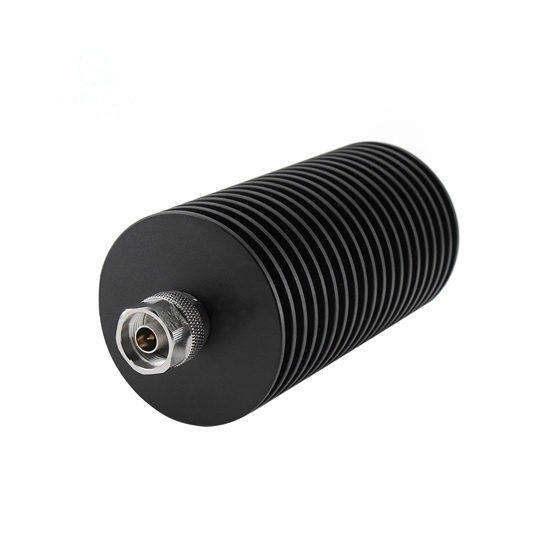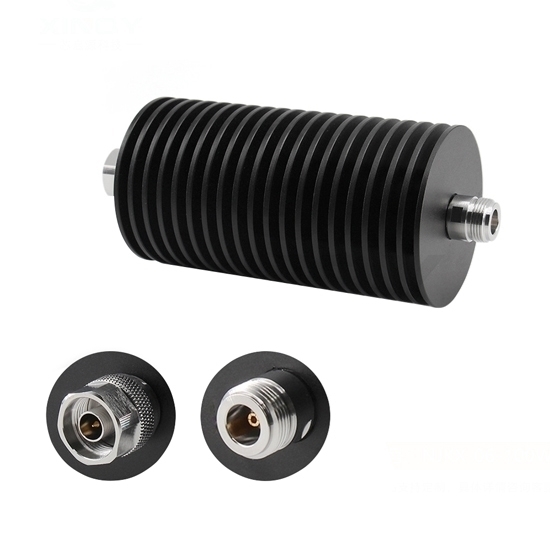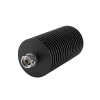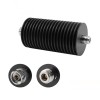



- Stock: In Stock
- Model: RDDLZ-RFFA-40DB100W
- Weight: 1.00
- SKU: RDDLZ-RFFA-40DB100W
Available Options
Designed as a coaxial device, the 100W fixed RF coaxial attenuator operates passively, minimizing signal power without introducing additional electronic components. The SMA attenuator, utilizing subminiature version A connectors, is a common choice for in-line applications due to its compact size and reliable performance.
Specification
- Model: RDDLZ-NJKP-06-100W-40dB
- Frequency Range (Optional): DC~6GHz
- Standing Wave Ratio (VSWR): 1.25:1 (Max)
- Attenuation Value: 40dB
- Impedance: 50 Ohm
- Average Input Power: 100W@25℃
- Pick Power: 5kW (5μsce Pulse Width, 0.5% Duty Cycle)
- A connector Type: N-Male
- B connector type: N-Female
- Directionality: N Male Input, N Female Output
- Temperature Coefficient: <0.0004dB/℃
- Working Temperature: -55℃~+100℃
- Inner Conductor Material: Beryllium Bronze with Gold Plating
- Outer Conductor Material: Brass Plated with Ternary Alloy
- Heat Sink: Aluminum Alloy Black
- Insulator: PTFE
- Net Weight: 561g
Dimension (Unit: mm)
Tips: Are fixed RF attenuators with temperature compensation?
Fixed RF attenuators typically do not come with temperature compensation as a standard feature. These attenuators are designed to provide a constant level of attenuation across a specified frequency range, but they may exhibit variations in performance with temperature changes. Temperature-compensated attenuators, on the other hand, are specifically engineered to minimize the impact of temperature fluctuations on their attenuation characteristics.
In applications where temperature stability is crucial, designers may opt for specialized temperature-compensated attenuators to ensure consistent performance across varying environmental conditions. These attenuators often incorporate components or designs that counteract the temperature-induced variations, maintaining precise attenuation levels over a wider temperature range. It's essential to check product specifications and consult with manufacturers to determine whether a specific fixed RF attenuator includes temperature compensation features or if a temperature-compensated variant is available for applications with stringent temperature requirements.
